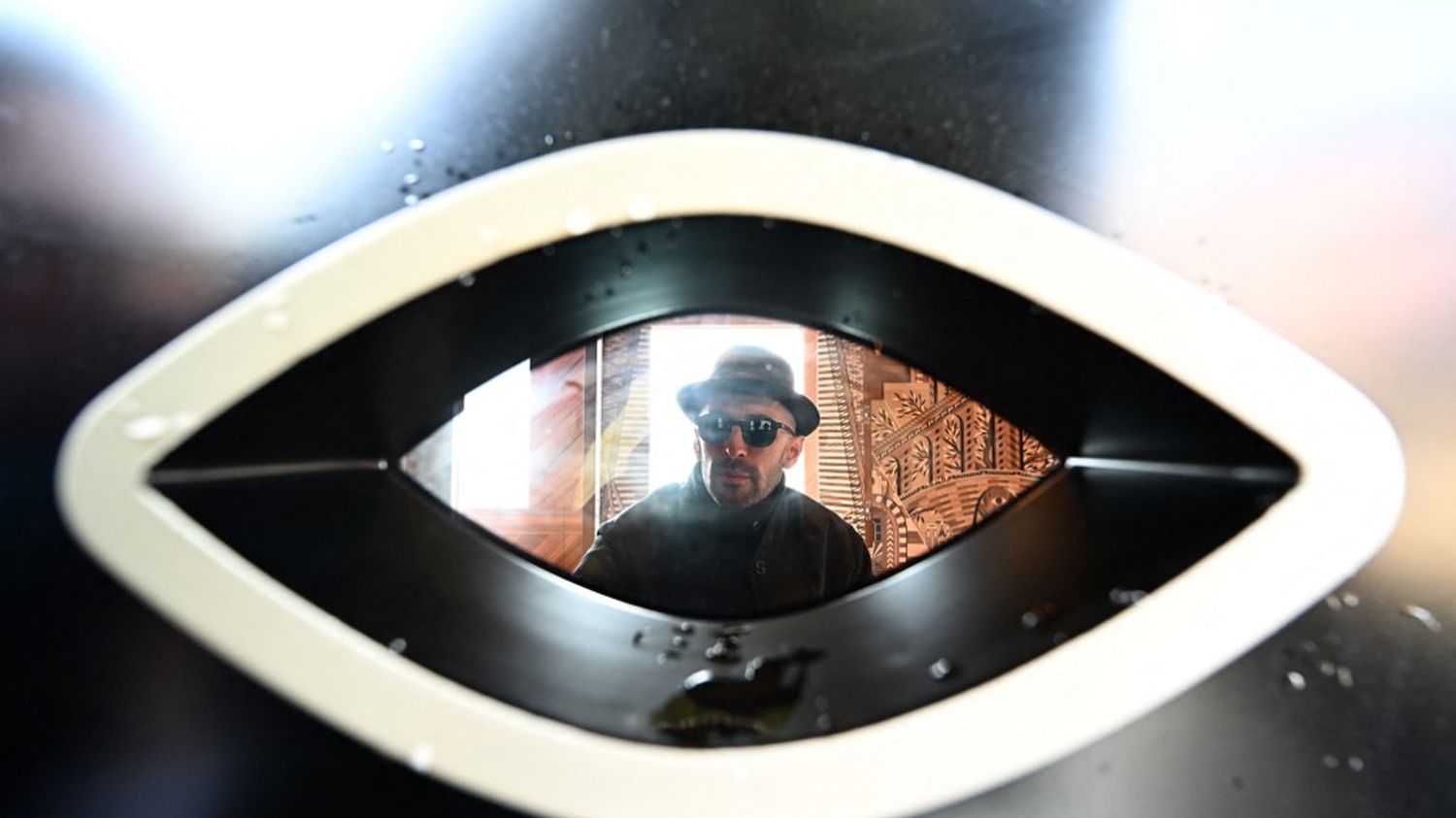A French photographer embarked on a “crazy project”: decorating an entire carriage of the Venetian Simplon-Orient-Express.

Published
Reading time: 3 min

“Change of perspective” beyond borders: after a career of more than 25 years, a taste for travel and elsewhere continues to shape the work of JR, the world-renowned street artist whose latest project starts with the railway.
At the age of 41, the French photographer with a hat and dark glasses, who became famous for his XXL photo collages, embarked on “crazy project” : decorate an entire carriage of the Venice Simplon-Orient-Express. “Everybody knows the Orient-Express, but not many people know that it still runs,” He said on the margins of the 60th Venice Biennale of Contemporary Art.
“Live Business”
To mark the occasion, the shimmering midnight blue sleeping car, made legendary thanks to Agatha Christie’s detective novel and its big screen adaptations, traveled this week on a barge through the waters of the city’s Doges Lagoon, before the rail’s launch to Europe in the spring of 2025. of “living work” – including a tea room and a library – JR, who had mastered the codes of events, had fun hiding in his corners various references to his work, letters, binoculars, even a camera from the 1920s. “It’s one of those cars that had 1,000 lives. When we found it in Belgium, it was still burned and dented because it had been abandoned for a long time,” he recalls, confiding his “fascination” with the world of trains.

JR sees a way in this means of transport “travel” her works, “like a message in a bottle”. Monumental trompe l’oeil works, portraits, collages… From the favelas of Rio to the Louvre, from New York to Nepal, the artist’s ephemeral work crossed borders and was even the subject of retrospectives in prestigious museums. Social issues such as women’s rights are often discussed. (“Women are heroes”)immigration (“Displaced”) or weapons (“Guns in America”).
Before festivals and awards, the artist’s work drew inspiration from the rails “by traveling by metro or RER” in Paris. Beyond his geographical mobility, the street artist likes to walk “the road to the unknown”, “like the world of ballet, opera, trains, etc. Ultimately, I think that’s where I learn the most,” he admits. Since the encounter is an integral part of the journey, JR argues that it is an “infiltrating art” that actively engages communities and publics to erase the opposition between subjects and actors.
“When I was 16/17, cameras started to become digital. Photography was no longer a sport for the rich. Then we democratized travel, we could travel for free by train or plane at home. the other side of the world. I don’t think I would be an artist if I time I did not give birth.”
In November, 25,000 people attended a sound and light show featuring 153 dancers on huge scaffolding in front of the facade of the Palais Garnier in Paris, which the artist turned into a cave. This mesmerizing performance faced many obstacles, the threat of rain, warnings of raids and technical uncertainties that gave the project “more chance of failure than success”.
“What people don’t realize is that we ourselves didn’t know if it was going to happen, suddenly it’s something that’s never been done, that’s a sign that it’s an interesting path.” he explains. “That’s what I still do today: I travel, confront images with others, change perspectives, but above all I question because I think that’s what has the greatest power of art.”

